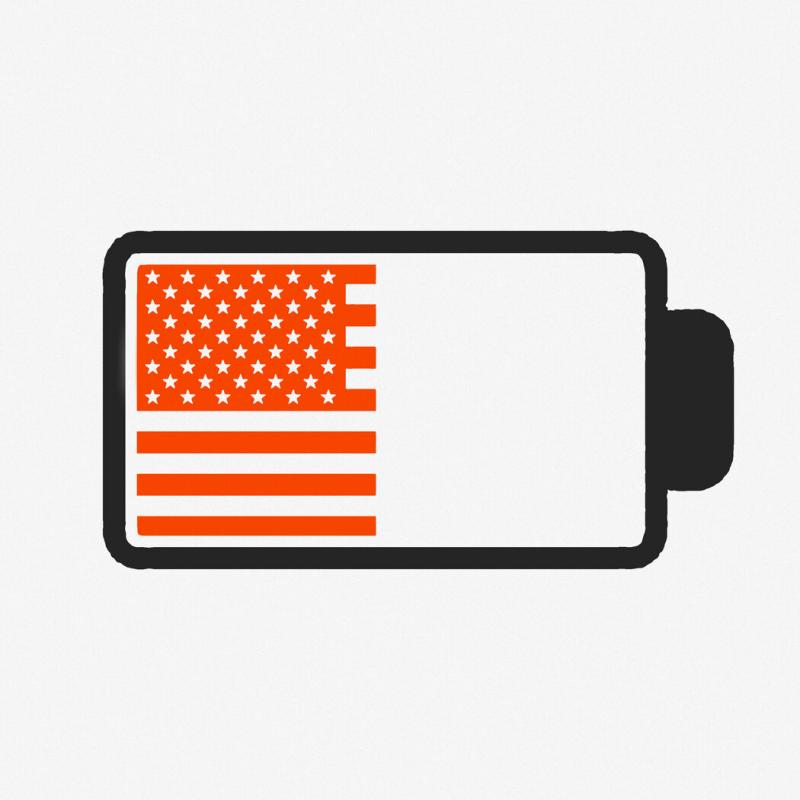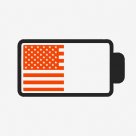
When I introduced me to me in the mouth of the mouth, Matteo Haramimi mentioned that his battery was "not efficient".
Oh.Isn't this a good thing?
The CEO of the Form Energy said that it was not true.Efficiency refers to the ratio of energy you get from the battery to the energy when charging.Of course, higher efficiency is always good, but for the market targeting Form Energy, more importantly, reducing the production cost of battery.
Form Energy's battery does not use expensive lithium.Instead, the ordinary iron is used since the iron age (about 2600 years ago).Form Energy's battery generates electricity through the oxidation reaction of iron, and then charging is to restore oxides into iron by electricity.
The target market ofForm Energy includes power companies. These companies need to store power when the power is sufficient and release it when the demand is peak.A large number of wind and solar power equipment have been installed in some places in the world, so that the electricity prices in some markets are often negative: power companies are actually paying for customers, because it is cheaper than turning off power generation equipment.
For power companies, the cost of building a battery farm is very low. It can absorb a large amount of cheap and even negative electricity for sale in the future. This sounds good, although it is large and its efficiency is very low.Form Energy's first commercial project broke the ground in August. The customer was Great River Energy, a non -profit power cooperative in Minnesota.
Mobile phone or electric vehicles may never use iron-air batteries, but Form Energy does not intend to conquer every segment of each market.As the British say, do their best.
I take Form Energy as the beginning of this article, partly because I like the idea of capturing energy from rust, and partly because it is one of the many companies in the United States that help this country to try to return to the frontier of battery development.
The United States has given the lithium -ion battery market to others.The physicist of the University of Texas John Gudidov shared the 2019 Nobel Prize in Chemistry for multiple breakthrough research, including the development of better lithium -ion battery positive materials in 1980.A start -ups who tried to commercialize it got hundreds of millions of dollars from the Obama administration, but eventually went bankrupt.In 2013, a Chinese company acquired the bankruptcy startup A123.As American companies withdrew from the production of lithium -ion batteries, other Chinese companies quickly entered this field.
Today, China completely dominates the production of global lithium -ion batteries. These batteries are used in electric vehicles, mobile phones, laptops, and wireless tools.According to South Korea's SNE Research, in the first seven months of this year, the Ningde Times accounted for 38%of global electric vehicle battery production, while another Chinese company BYD ranked second, accounting for 16%.There are no American companies in the top ten.
It should be noted that as my colleague David Wallace Wales has written this month, China has achieved the achievement of reducing lithium-ion battery prices and solar panel prices (solar panels have available in battery boards.It is a good thing for fighting global warming) to help lithium -ion batteries.But if Americans can create more such equipment to save the earth, not just buying, it will help the US economy.
Now things are developing in a good direction.Under the leadership of US President Biden, the two -party infrastructure casting and reducing the incentive measures in the inflation bill are promoting major investment in batteries, including domestic production capacity of lithium -ion batteries.In addition, the US Department of Energy also invested billions of dollars to develop new batteries, including solid -state batteries with broad prospects. This battery uses solid electrolyte instead of liquid or gel.Related projects include a "long -term energy storage research" plan. The goal is to reduce the energy storage cost of batteries for more than 10 hours in 2030 by 2030 from the level of 2020.
Last year, the US President Biden issued an administrative order stipulating that "new technologies and new products developed with the support of the US government are made in the United States as long as they are feasible and conforming to applicable laws."
The Global Energy Policy Center of Columbia University pointed out in a report last year that the federal government's measures "imitated China's approach more than ten years ago, that is, the use of subsidies on both sides of supply and demand and government support to establish a supply chain."
China is far ahead in the field of lithium -ion batteries. It is difficult for me to imagine that the United States can catch up and be grateful to meet domestic needs.I think the United States is most likely to surpass China to adopt new technologies, such as Form Energy's iron-air battery.
I like the creativity of battery designers. They look for elements with ideal electrical and other characteristics in the element cycle table.ARPA-E is the R & D department of the US Department of Energy. It is funded by startups engaged in battery chemistry research.And Prussian blue dye (yes, really).There are also some energy storage technologies of the battery, such as pumping water to the top of the mountain, or stored calories in the form of molten salt.
"Applicable to all solutions in one solution is unable to withstand," Erik Dreiserhus, CEO of ESS Company, Wilson Vil, Oregon(Different from iron-air batteries)."How many kinds of salad sauce is there? Can't believe that an energy storage technology will win."
Information Technology and Innovation Foundation is a think tank funded by the scientific and technological community. Since 2012, it has been calling on the United States to pay attention to the development of batteries.A report released by the foundation in July states that the United States' response to China on electric vehicles "includes investment in research and development to accelerate technological innovation and stimulate consumers to accept electric vehicles (for example, deployment through charging infrastructure), and as well asDefense trade measures ".
I have discussed the prospects of the US -China battery competition with the author of the report and the foundation of the report and the vice president of the global innovation policy."After 20 years, science and technology policy scholars will see it as a case to test whether the tougher policy can be successful," he said."I think, as long as we really use it as a priority of the country, we can succeed."




